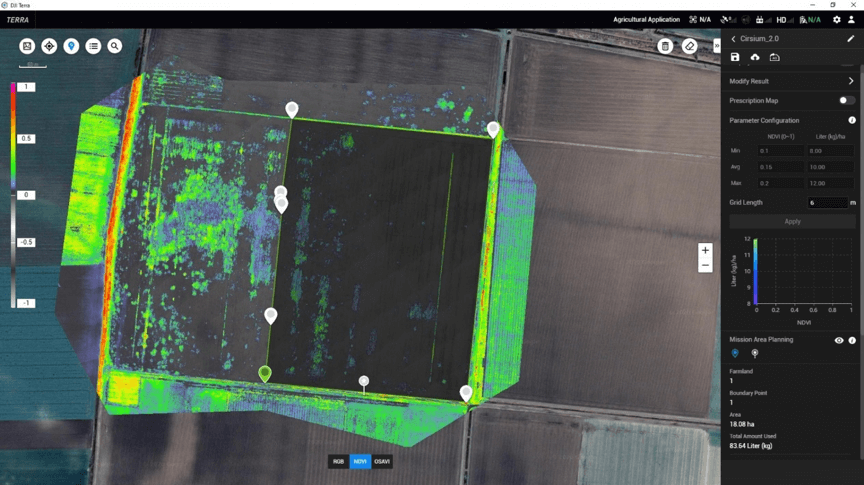Background
Cropland weed management is a global challenge. Weed pressure in the field decreases crop yield as a result of resource competition. To combat weeds and protect their crops, farmers are increasingly adopting herbicides in farm management. However, overuse of herbicides not only increases farmers’ operational costs but also undermines the health of the ecosystem. Many countries have set a goal to reduce agricultural chemical usage. The European Green Deal aims to decrease agricultural chemical usage by 50% by the year 2030. Through a case study of Cirsium arvense management, DJI partners PlantaDrone Kft. and Duplitec Kft. recently proved that precision agriculture and drone technology might help to achieve these goals by implementing multispectral scouting and precise spraying with drones.

Cirsium arvense is a widespread weed across many continents, including Europe. It competes with crop plants for soil resources and releases chemical toxins poisonous to other plants, causing severe yield loss. It can spread from seeds and from modified, underground stems, making land tilling and plowing ineffective in controlling Cirsium arvense spread. Herbicide spraying is the most commonly used management method. Traditionally, in autumn or spring, before or after seeding, farmers use a tractor to spray the entire field, 300L/ha, of an herbicide solution containing 5L of glyphosate.
The Mission
Noticing that Cirsium arvense often presents in only some portions of the field rather than the entire field, DJI partner, PlantaDrone, from Hungary, decided to adopt a spot spraying solution using drones to try to decrease chemical usage.
First, they flew a DJI P4 Multispectral drone over an 18-hectare cereal field to collect multispectral images and then used DJI Terra to process and generate an NDVI (Normalized Difference Vegetation Index) map from these images. Given that this was before seeding and no other crop plants were present in the field, NDVI effectively located Cirsium arvense patches in the field (the green patches shown in the picture below).

Based on the NDVI map, they generated a prescription map. Three different dosages of glyphosate solution were sprayed, depending on the infection density of the weed spots (weak, moderate, and strong infection). An 8L/ha solution was sprayed on the weakly infected areas (0<ndvi< span="">≤0.1), 10L/ha on the moderately infected areas (0.1<ndvi<0.2), 12l="" a="" and="" applied="" areas="" ha="" infected="" solution="" strongly="" the="" to="" was="">≥0.2) (E. SZALMA (2021). Areas with NDVI≤0 were not sprayed. In every 10L of the solution, there is 3.5L of glyphosate (35% concentration).<ndvi≤0.1), 10l="" areas="" ha="" infected="" moderately="" on="" the="">

This prescription mission was then sent from Terra to the DJI Agras drone for spot spraying.

Results
The drone used 83L of the solution, containing 29L of glyphosate. Compared with a blanket application with a tractor, which would use a total of 90L, 67.78% of chemicals were saved, meaning a savings of 14.57 EUR per hectare for farmers (E. SZALMA (2021).
|
Application Method |
Total Glyphosate Usage |
Total Cost |
Total Saving |
Total Saving Per Hectare |
|
Blanket application with tractor |
90L |
387 EUR
|
0 |
0 |
|
Spot spraying with drone |
29L |
124.7 EUR |
262.3 EUR |
14.57 EUR |
After successfully helping farmers to reduce glyphosate usage and chemical costs through spot spraying, Elemér Szalma, Engineer from PlantaDrone, believes that drone technology will be significant for the EU’s Green Deal. “If we want to achieve the agricultural chemical decrease goals of the EU’s Green Deal by the year 2030, our best chances are zone/spot spraying/spreading, and Variable Rate Application.”
References

